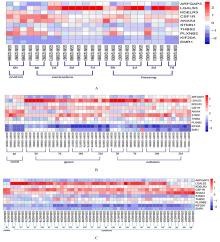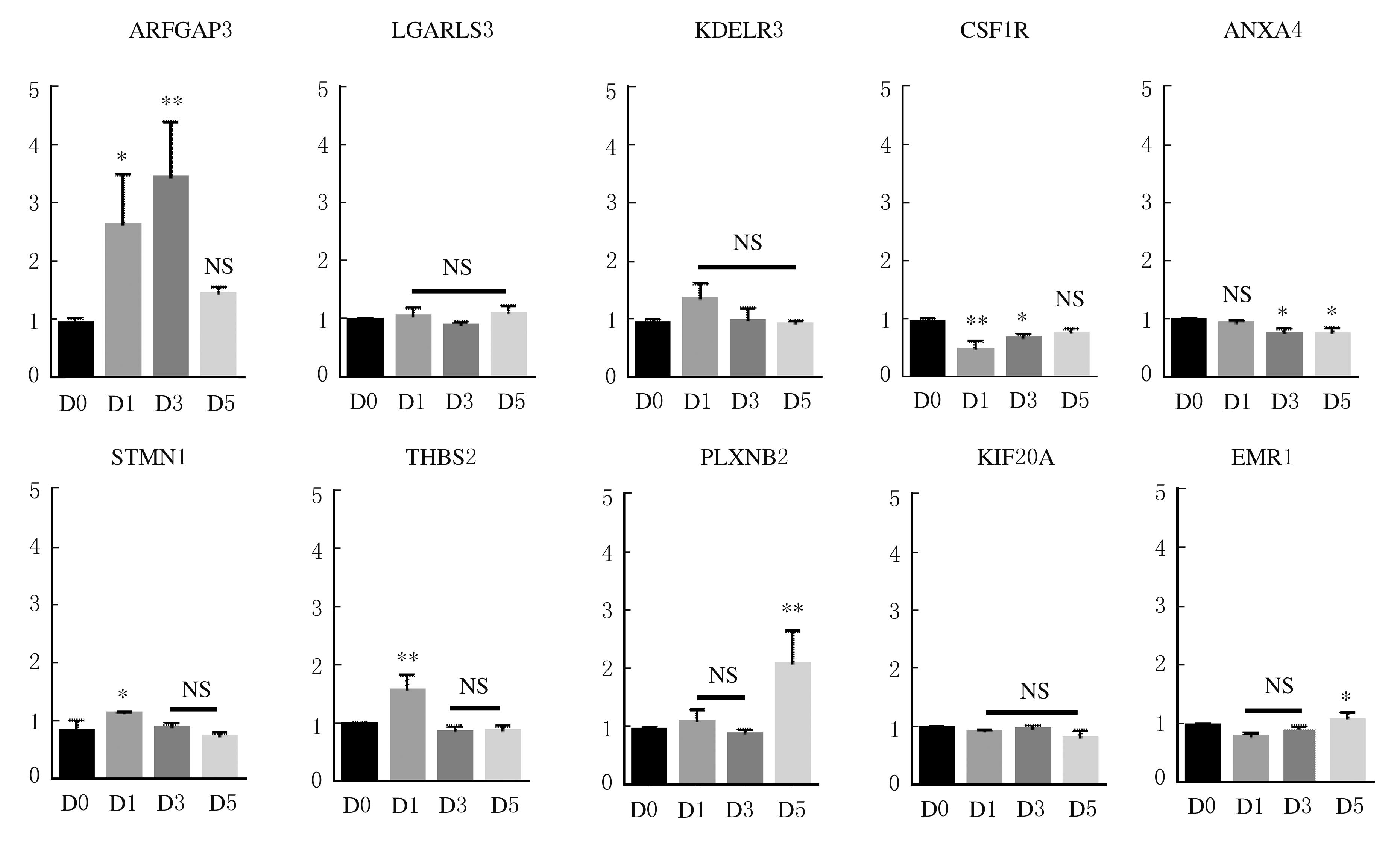吉林大学学报(医学版) ›› 2021, Vol. 47 ›› Issue (5): 1092-1098.doi: 10.13481/j.1671-587X.20210503
盆底肌损伤后修复过程中囊泡转运相关基因的表达
陈珏,洪莉( ),李素廷,王治,陈茂,郝梦磊,肖雅,闵洁,胡鸣
),李素廷,王治,陈茂,郝梦磊,肖雅,闵洁,胡鸣
- 武汉大学人民医院妇产科,湖北 武汉 430060
Expressions of vesicle transport-related genes during repair of pelvic floor muscles after injury
Jue CHEN,Li HONG( ),Suting LI,Zhi WANG,Mao CHEN,Menglei HAO,Ya XIAO,Jie MIN,Ming HU
),Suting LI,Zhi WANG,Mao CHEN,Menglei HAO,Ya XIAO,Jie MIN,Ming HU
- Department of Gynecology and Obestetrics,People’s Hospital,Wuhan University,Wuhan 430060,China
摘要: 探讨在阴道分娩导致盆底肌损伤的过程中与骨骼肌再生修复及囊泡转运相关的基因表达,初步阐明ADP核糖基化因子GTP酶活化蛋白3(ARFGAP3)等效应分子在盆底肌损伤后再生修复中的潜在作用。 选取12周龄的C57 BL/6健康雌性处鼠32只,通过阴道扩张加远端牵引法构建盆底肌损伤模型,分为对照组、造模1 d组、造模3 d组和造模5 d组。在基因表达综合数据库(GEO)中,以“muscle regeneration”为关键词搜索与骨骼肌再生修复相关的信息,选取GSE5413、GSE45577和GSE469 3个数据集,使用GE02R在线分析工具和R软件筛选差异表达基因,在共差异表达基因中选出与胞内囊泡转运相关的10个基因(ARFGAP3、LGALS3、KDELR3、CSF1R、ANXA4、STMN1、THBS2、PLXNB2、KIF20A和EMR1)。采用实时荧光定量PCR(RT-qPCR)法检测盆底肌损伤修复过程中小鼠盆底肌组织中上述囊泡转运相关差异基因的表达水平。 在盆底肌损伤后表达水平升高的基因有ARFGAP3、STMN1、THBS2和PLXNB2。与对照组比较,造模1 d组小鼠盆底肌组织中ARFGAP3、STMN1和THBS2基因表达水平升高(P<0.05或P<0.01),造模3 d组小鼠盆底肌组织中ARFGAP3和PLXNB2基因表达水平升高(P<0.01)。在盆底肌损伤后表达水平降低的基因有CSF1R、ANXA4和EMR1。与对照组比较,造模1 d组小鼠盆底肌组织中CSF1R和EMR1基因表达水平降低(P<0.05或P<0.01);造模3 d组小鼠盆底肌组织中CSF1R和ANAX4基因表达水平降低(P<0.05),造模5 d组小鼠盆底肌组织中ANAX4基因表达水平降低(P<0.05)。在盆底肌损伤后表达水平不变的基因有LGARLS3、KDELR3和KIF20A。 ARFGAP3可能在盆底肌损伤后修复过程中起到重要调控作用。
中图分类号:
- R711.4






